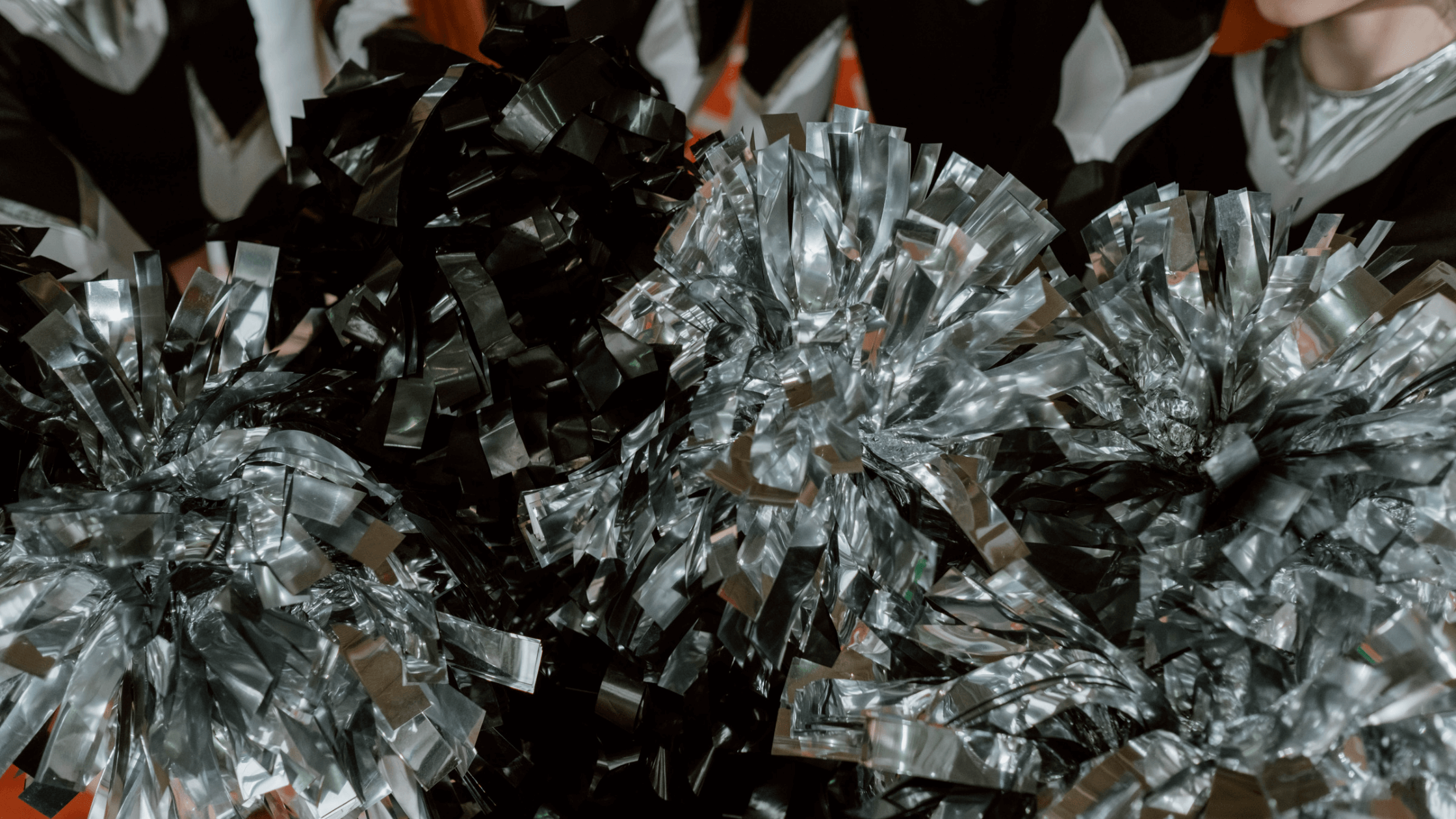Debunking Myths and Misconceptions About Cheerleading

Licensed Physical Therapist, PT, DPT // Dry Needling Certified // Orthopedic Certified Specialist // EW Motion Therapy Homewood
Cheerleading is an exciting and dynamic sport that combines athleticism, teamwork, and spirited performances. However, despite its popularity, cheerleading is plagued by numerous myths and misconceptions that often overshadow the hard work and dedication put in by athletes. We admire the strength and determination of our cheer clients at EW Motion Therapy, and we dedicate ourselves to helping them prepare for the demands of their sport. Even if our services do not fit your needs, you can still read on as we aim to debunk some of the biggest myths surrounding cheerleading while providing valuable advice on finding the best cheer gym in your area.
Why is cheerleading so misunderstood?
Cheerleading can be a misunderstood sport for various reasons. Here are some of the common factors that contribute to the misconceptions surrounding the sport:
- Lack of awareness: Many people have limited exposure to cheerleading beyond what they see during sports events or in popular media. This limited understanding can lead to misconceptions about the sport's athleticism, complexity, and competitive nature. Without firsthand knowledge or exposure to the training and competitions, it's easy to underestimate the skill and dedication required in cheerleading.
- Focus on stereotypes: Cheerleading has often been portrayed in media and movies as solely a sideline activity focused on pom-poms and cheering for other sports teams. These stereotypes can overshadow the reality of competitive cheerleading, which involves intricate routines, stunts,jumps and tumbling. The perception of cheerleading as a purely decorative and supportive role can contribute to its misunderstanding as a less legitimate sport.
- Gender bias: Historically, cheerleading has been associated with female athletes, perpetuating the misconception that it is an exclusively feminine activity. This gender bias can limit people's understanding of cheerleading's physical demands and overlook the contributions of male athletes in the sport. Including male athletes and co-ed teams in cheerleading gradually challenges these stereotypes, but the bias still exists in some perceptions.
- Misrepresentation in media: Media portrayal of cheerleading often focuses on drama, stereotypes, and controversies rather than showcasing the sport's true essence. Reality TV shows and movies tend to amplify interpersonal conflicts and exaggerated storylines, leading to a distorted view of cheerleading. These exaggerated portrayals can reinforce stereotypes and misconceptions, overshadowing the athleticism and teamwork involved in the sport.
- Lack of regulation: In some regions, there may be a need for standardized rules and oversight in cheerleading, which can lead to inconsistencies in training, safety measures, and skill development. This absence of a unified framework can contribute to misconceptions about the sport's professionalism and safety.
Overcoming these misunderstandings requires increased awareness and education about cheerleading as a legitimate sport with diverse aspects, including sideline support and highly competitive routines. By promoting accurate information, showcasing the athleticism and dedication of cheerleaders, and challenging stereotypes, we can help foster a better understanding of the sport.
Three myths about cheerleading: debunked
Myth #1: Cheerleading isn't a real sport
One of the most persistent myths about cheerleading is that it isn't a legitimate sport. However, cheerleading requires high physical fitness, coordination, and skill. Cheerleaders undergo rigorous training, including gymnastics, stunting, tumbling, dance, and strength conditioning. They also compete at regional, national, and international levels, showcasing their athleticism and talent. Cheerleading demands teamwork, discipline, and commitment, making it undoubtedly a sport.
Myth #2: Cheerleaders are only responsible for sidelines and pep rallies
Contrary to popular belief, cheerleading is not limited to sidelines and pep rallies. While cheerleaders do support their teams during games, modern cheerleading has evolved into a highly competitive sport in its own right. Competitive cheerleading involves complex routines, acrobatics, stunts, and tumbling that require immense skill, precision, and synchronization. Cheerleaders train intensively to perfect their routines and compete at various levels, showcasing their talent and athleticism in front of judges.
Myth #3: Cheerleading is only for girls
Cheerleading is often associated with girls, but the sport is open to all genders. Co-ed cheerleading teams are becoming increasingly popular, showcasing a diverse and inclusive atmosphere. Many male cheerleaders excel in stunting and tumbling, bringing strength and athleticism to the team. It's essential to challenge gender stereotypes and promote inclusivity in cheerleading, welcoming athletes of all genders to participate and excel in the sport.
Finding the best cheer gym in your area
Now that we have debunked some of the common myths surrounding cheerleading let's explore how to find the best cheer gym in your area:
- Research local cheer gyms: Research cheer gyms in your area. Look for gyms with experienced coaches, a positive training environment, and a focus on safety. Read online reviews and testimonials from current or former athletes to understand the gym's reputation.
- Visit gyms in person: Once you have a list of potential gyms, visit them in person. Observe the training sessions, interact with the coaches, and ask questions about their coaching philosophy, safety protocols, and competition opportunities. Pay attention to the gym's facilities and equipment as well.
- Assess coaching staff: The quality of coaching is paramount in cheerleading. Ensure that the gym has knowledgeable and certified coaches who prioritize skill development, proper technique, and safety. Experienced coaches can guide athletes effectively, fostering their growth and helping them reach their full potential.
- Consider the gym's philosophy and values: Each cheer gym may have a unique approach to training and competition. Consider whether the gym's philosophy aligns with your goals and values. Some gyms prioritize competition success, while others emphasize personal growth and teamwork. Choose a gym that resonates with your aspirations as an athlete.
- Safety and injury prevention: Cheerleading involves physical exertion and carries inherent risks. Look for a gym that prioritizes safety by enforcing proper technique, using appropriate spotting techniques, and maintaining a clean and well-maintained training space. Inquire about the gym's safety policies and procedures to ensure the well-being of athletes.
- Talk to current athletes and parents: Connect with current athletes and their parents to gain insight into the gym's culture and training experience. They can provide valuable information about the gym's professionalism, communication, and overall satisfaction.
Cheerleading is a great sport that requires athleticism, dedication, and teamwork. By debunking common myths and misconceptions, we shed light on the true nature of cheerleading as a competitive and physically demanding discipline. When seeking the best cheer gym in your area, consider factors such as coaching staff, safety protocols, training philosophy, and the gym's overall environment. By finding the right gym, you can embark on a rewarding cheerleading journey that nurtures your skills, passion, and personal growth. Through sport-specific programming and expert advice at EW Motion Therapy, we help our cheer clients improve performance, prevent injury, and prepare their bodies for current or new skills. If you are curious about what else physical therapy can do for you, click the button below to download our answers to 20 frequently-asked physical therapy questions.


